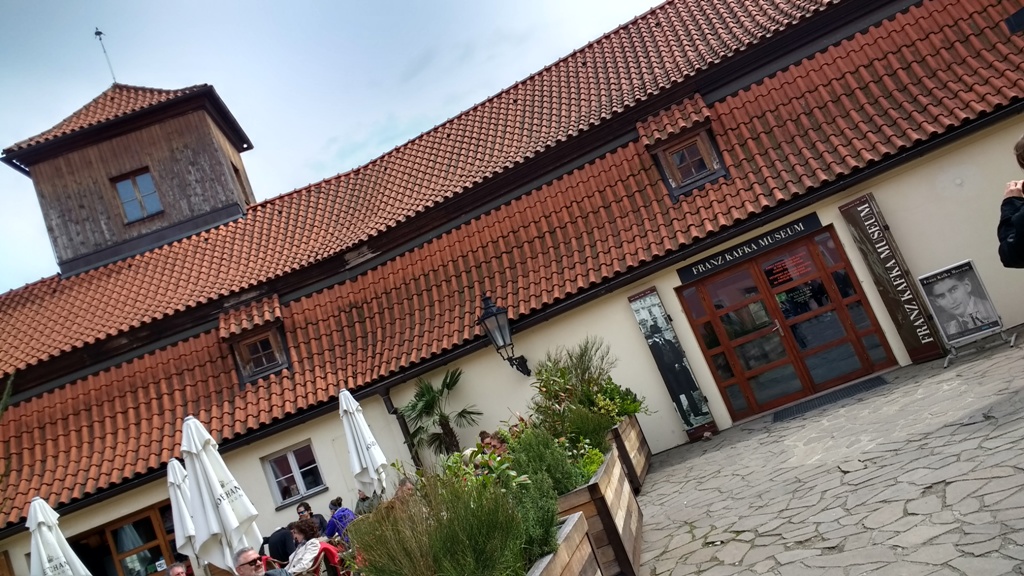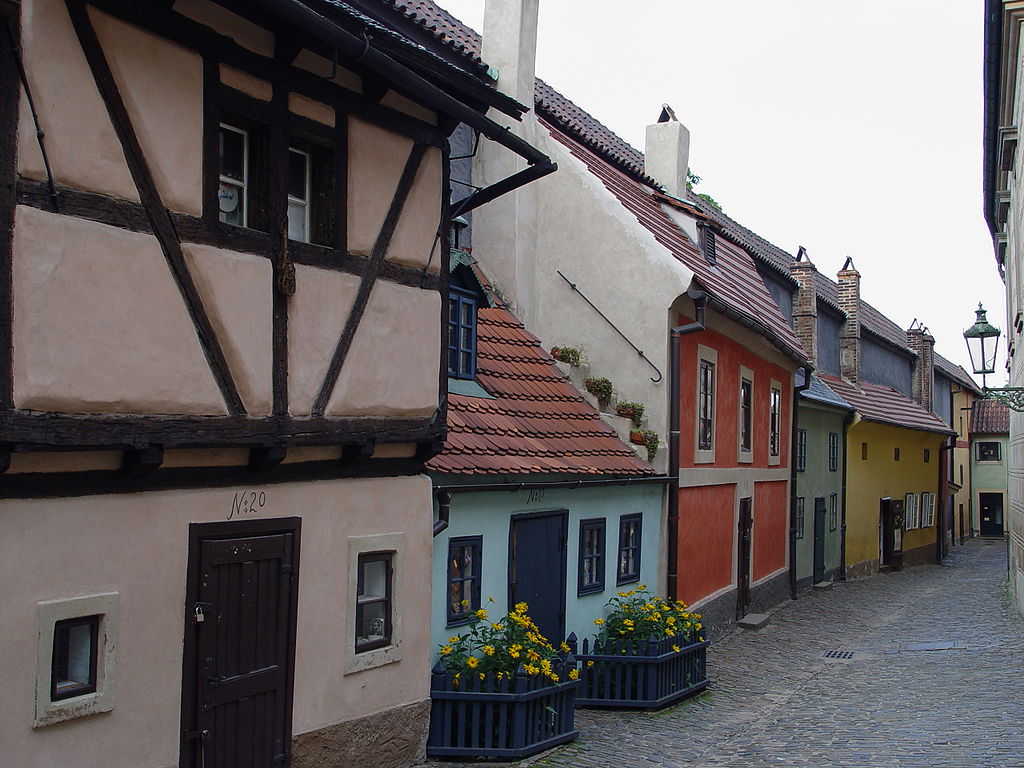Franz Kafka, the famous writer of The Metamorphosis and The Castle, was born in Prague and spent most of his lifetime in that city. Because my husband is a big fan of this writer, we decided to spend a lovely Easter vacation in Prague, following his steps in the city.
Prague is really pretty and has so much to offer, but one must also say that it is overcrowded by tourists. Because of that, it is a great idea to visit the main attractions, such as the Astronomical Clock and Charles Bridge either very early in the morning, or at night, where less people are around.
But to follow Kafka´s steps in Prague is an alternative touristic circuit. You will visit great places, some of them really non touristic, and most of them free of admission fee.
First stop: Kafka´s birth house at the Jewish quarter
Here is where Kafka, son of a Jewish merchant family, was born. The Jewish quarter is nowadays the most expensive district in Prague, and several luxury brands have their stores there. But in Kafka´s time it was a low-middle class neighborhood, with sanitary problems and often flooded by the growth of the River Moldawa.
The house where he was born is located at the Franz Kafka street (Franze Kafky, on the northeast side of the Old Town Square). Besides of the small sculpture in the two walls representing the writer, one would not notice that it is such an important historic building in the city.
Second stop: Kafka museum
The whole life of Kafka is explained in an excellent exhibition presented at the Kafka Museum, very close to Charles Bridge, and in the nightlife quarter called Malastrana.
Admission costs 200 Crowns – about 8 Euro for an adult, and 120 crowns – about 5 Euro for students, seniors and disabled person, and it is really worth to visit it. Just the building and the inner architecture, together with the wall colors, music and ambient light make this visit something really special.
Along the exhibitions, one learn much about Kafka´s dissatisfaction with his job at the Workers' Accident Insurance Institute, where he spent 14 years: from July 1908 to July 1922. He had to write flyers and documents to promote prevention of work accidents, and follow cases to ask compensations. Several of his manuscripts are shown in the exhibition, together with pictures, originals from his sketches and literary creations.
Third stop: Kafka´s apartment in the Golden Lane
The Golden Lane is an alley into the Prague Castle, where merchants and artists used to live. Its small and picturesque houses host nowadays all kind of gift shops, and armory exhibitions.
In 1916, Frank Kafka moved into the house number 22, currently painted in light blue, together with his sister Ottla, and lived there for one year. Today, the house is a bookstore devoted to Kafka´s books, with editions in every language, and charmingly decorated.
One tip: to visit the Golden Lane one should pay an entrance fee, despite of the fact that the entrance to the Prague Castle is for free, all attraction inside (like St. Vitus Cathedral or the Golden Lane) have an admission fee. But if you enter the castle after 4 pm, the Golden Lane is still open but no entrance fee is required.
Fourth stop: Kafka´s workplace
The building of the Workers' Accident Insurance Institute is located in the street Na Poříčí number 7, in the quarter called Nové Město. The building was turned into the Hotel Century Old Town, which has a wonderful bar honoring Kafka.
His bartender, Petr Sulek, have created the Kafka, a cocktail which got the third place at the Accor Bar Tender Competition in 2015. In my opinion, it must have won, because it is so delicious! It is a great mix of Rum, fruit juice and Becherovka, traditional Czech Republic liquor, which Petr hold in his hands in this wonderful picture of us. Cheers on Kafka!
Also, the walls around the bar and in the hotel lobby are decorated with some windows showing several objects used at the Workers' Accident Insurance Institute such as telephones, pens, desk objects, and a large collection of Kafka´s pictures and books. In case you want to stay in the room where Kafka used to work, you may book room number 214.
Fifth stop: Kafka´s grave
Frank Kafka died in 1934, and was buried in the new Jewish cemetery, a bit far away from the main touristic attractions in Prague. One should take the Metro, green line, until the station Želivského and you will get right in front of the cemetery’s entrance. When you get into the cemetery, remain on the path where you will find several signs, which indicate the location of Kafka´s grave.
From the new Jewish cemetery ride 2 more stations with the green line to Jiřího z Poděbrad. From that place, just a couple of streets away, you can reach the Žižkov Television Tower, one of Prague´s main attractions. Entrance fee to the observatory is 230 Crowns - 9 Euro. From above, the 360° view over Prague is breathtaking, and at the restaurant one can enjoy a coffee, a cocktail, or some of the well-known Czech gastronomy with a great landscape of Franz Kafka´s city.
Links of interest


